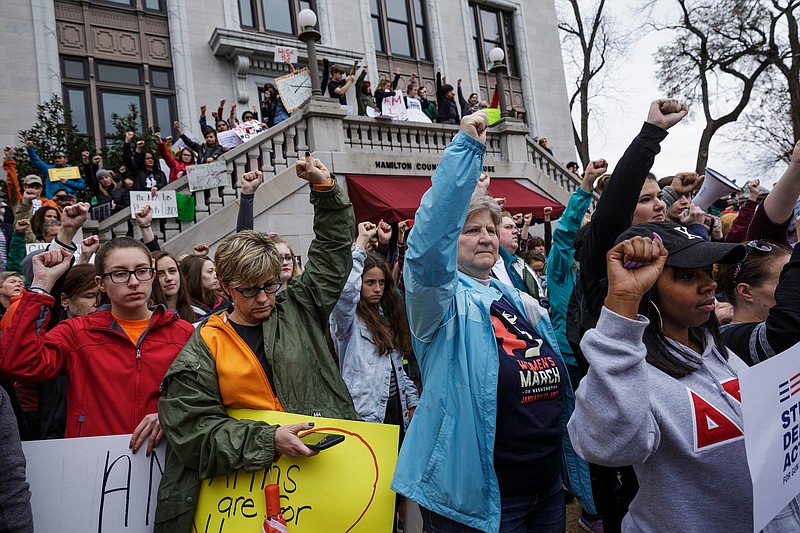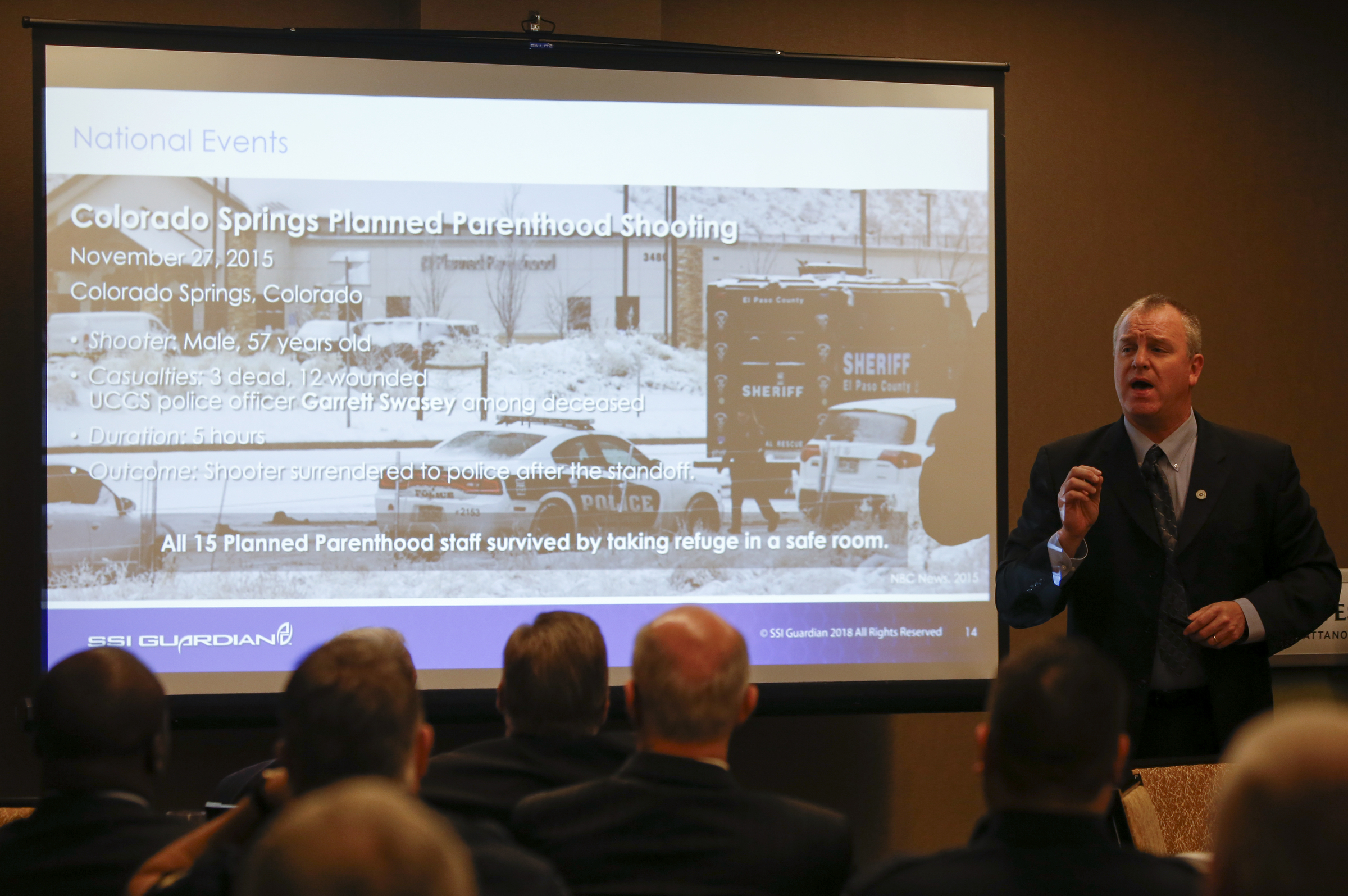It seems many parents, grandparents and teachers have rightly been bending the ears of our local leaders since the spate of high profile school shootings made news, recently after Valentine's Day when 17 students and adults were killed in Parkland, Fla., by a 19-year-old former student at Marjory Douglas High School.
Six to eight school resource officers are among the public safety investments proposed in the 2019 Hamilton County budget, Mayor Jim Coppinger said.
"This is something we hear from the public is a need, and we're going to do that," Coppinger said.
Only 29 of Hamilton County's 71 public schools now have resource officers. Coppinger said the schools intend to hire more officers for middle and high schools, and the county will kick in $350,000 to $400,000 to pay for vehicles and equipment.
That's probably not enough, but it's a far more reasonable - and safer - plan than asking teachers or, worse, volunteers, to carry guns to stand guard in our schools. Of course, guards in the schools are stopgap measures, not a cure, for this safety problem. As a nation, we eventually must deal with the country's lax gun culture and our failure to address the needs of the mentally ill.
But for now, to fund the new SRO positions, Hamilton County Schools Superintendent Bryan Johnson has said he is putting $500,000 in the budget for safety, and our county commissioners will contemplate that commitment of money for school safety in a briefing on the schools budget today. They will consider it again on May 15 in a hearing on the general fund budget. The public may attend both meetings, and feedback from the briefings will be used to fine-tune the budget, which should take effect July 1.
Sheriff Jim Hammond said having the schools help pay for school resource officers is a good start on his goal to have an SRO in every school, something he estimates will total about $4 million to start up - about $90 a year or 25 cents a day for each of our roughly 44,000 public school students.
"It is a continuing problem for the next few years until we solve this issue," Hammond said.
The sheriff has also said he's going to be talking with municipal mayors and police chiefs about picking up the tab for resource officers in their community schools.
But some citizens - while we all are concerned with student safety - correctly point out that all county taxpayers, no matter what their city, already pay for both schools and county safety. Asking cities and towns to put up more money amounts to double taxation for their property owners and business' sales tax collection.
While "sharing the burden" sounds fair, city-county double taxation is anything but fair. That needs to be a consideration when the commission's briefings take place.
Coppinger said his finance staff continues to crunch county revenue numbers, but the 2019 budget is going to come in under $800 million, compared to $725 million last year. Of that, 66 percent goes to education and debt service for school projects, the mayor said.
Those school projects include far more than increasing the numbers of SROs for student and teacher safety.
Thanks to commissioners changing the tax millage rate and giving us a de facto and much-needed tax increase last September (one that for most county homeowners means nearly $100 more on the average tax property bill each year), the county will finally be able to implement changes we believe eventually will help more than 40 percent of our public school third-graders to read at grade-level so they can continue to learn in upper classes.
We believe the increased revenue, coupled with Superintendent Bryan Johnson's district facilities school infrastructure plan, his Opportunity Zone learning plans for kindergarten through high school, his retirement incentive plan to help the district get better teachers, and his Future Ready Institutes plan to improve both graduation rates and make students jobs-ready, will lead to further improvements for the 44,000 students in our public schools.
Truth be told, every piece of those improvements - from upgraded facilities that put locks on classroom doors and create safe spaces, to more inspired education that better engages students, to more guidance counselors to support student emotional health and spot potential mental illness - also protect our young people and prepare them for productive lives.
In a time when Americans are 25 times more likely to be murdered with a gun than people in other developed countries, we must look at all the ways to help our students.
For what better cause can we spend our tax dollars?

